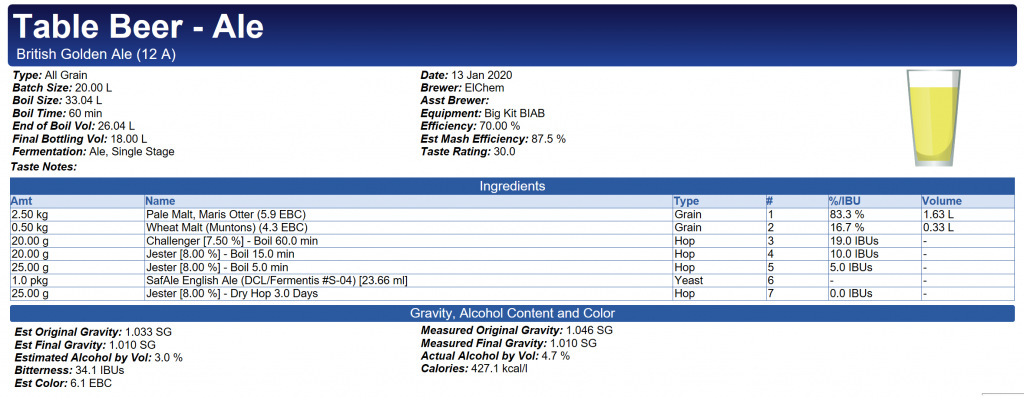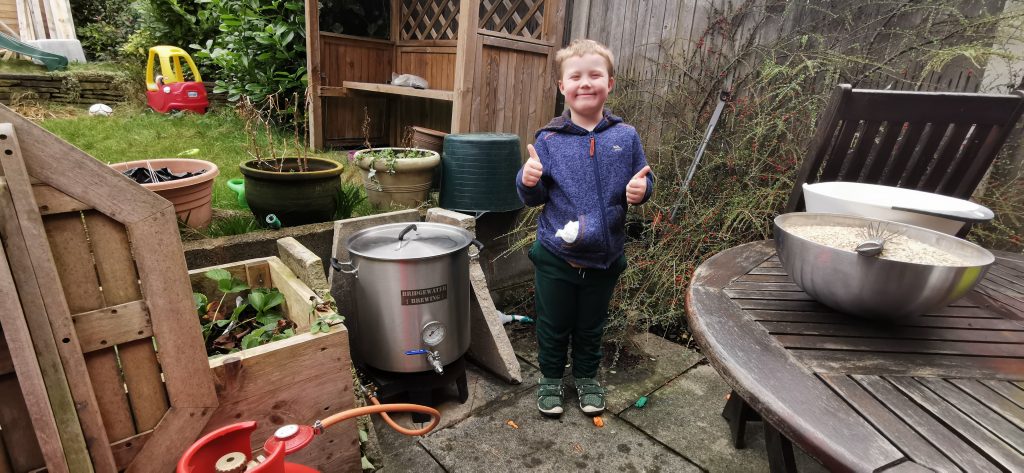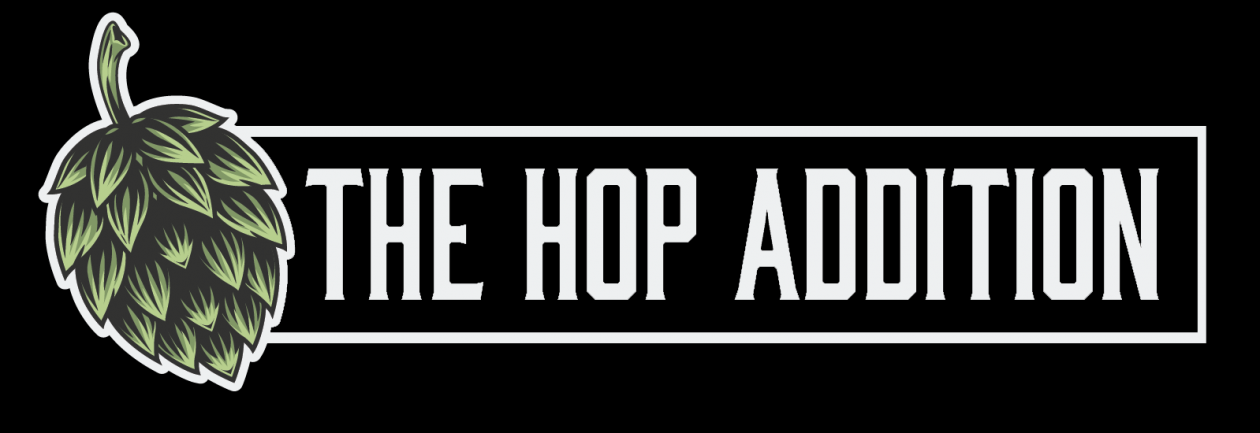BrewDay!
Table Golden Ale
So, its been a couple of weeks since my last brewday, and the kegs are running a little low as I’ve managed to find some time in my busy schedule to visit the shed on a couple of occasions for a pint or 2 and a video chat with friends and relatives. As such, its time for something a little different…
I’ve been loving lower ABV beers recently, something I can sit and have 3 or 4 pints of and not feel like I’ve been on a session. Todays recipe is as below….

If you listen to the podcast, you’ll know that I’ve moved back to a very simple BIAB setup for my brewing, and I’ve found that with a few stirs I can hit 70% efficiency easily, a value I’m very happy and content with. I’ve been wanting to use up my leaf hops so this is an opportunity to do just that with this brew.
Lets hope that everything comes together and the wife drags herself out of her pit early enough for me to do this brew before the weather closes in and it ends up not happening.
So, first update, I’m out of Jester, so that’s gotta be changed and I’m also low on First Gold so they are gonna be saved for a Boondoggle Clone later on this month. I’m gonna use Challenger to bitter and then use up my Olicana leaf hops. In the meantime here’s a picture of my brew buddy helping me just after mash in lol





